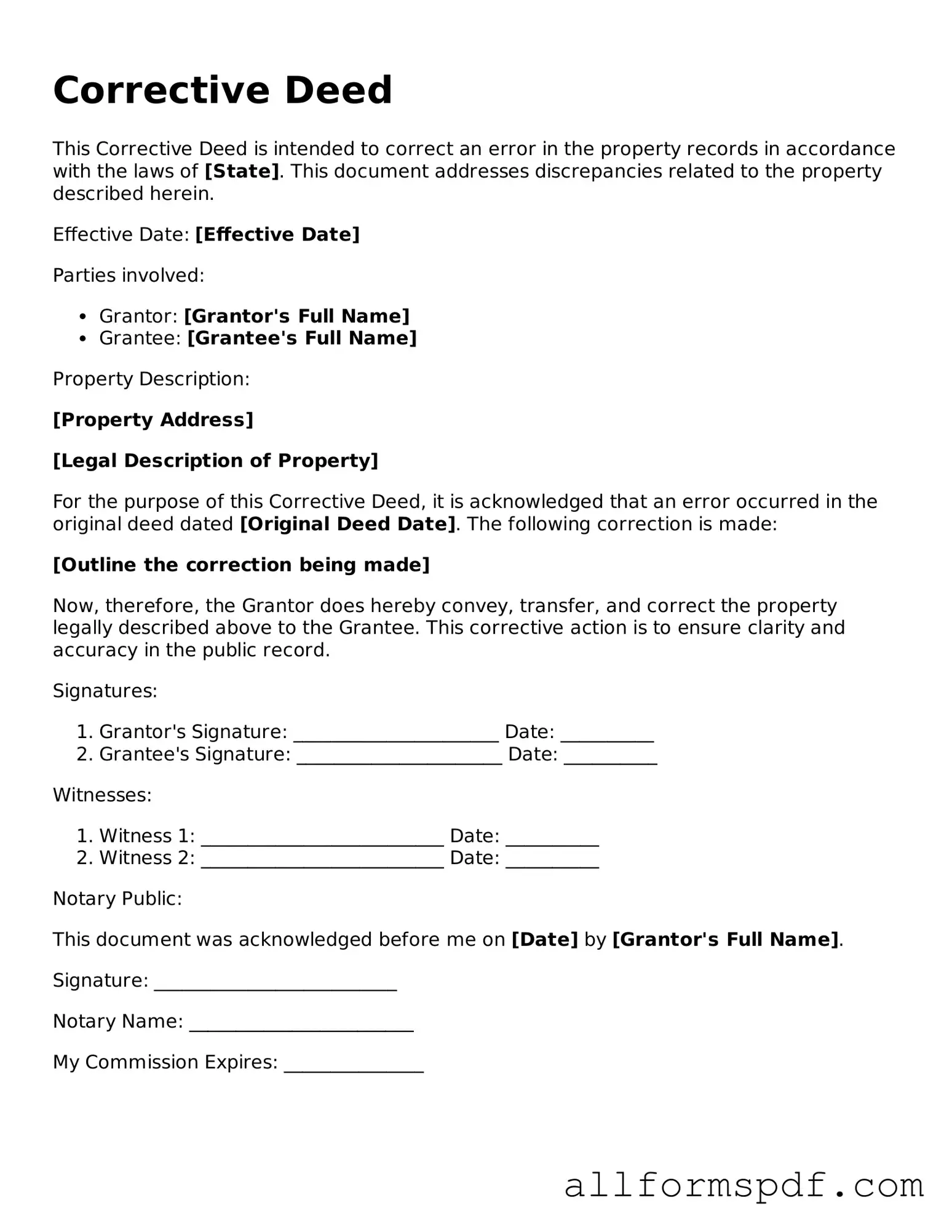Printable Corrective Deed Form
A Corrective Deed is a legal document used to amend or correct errors in a previously executed deed. This form ensures that the property records accurately reflect the intentions of the parties involved. By addressing mistakes, a Corrective Deed helps prevent future disputes and clarifies ownership rights.
Create My Corrective Deed Now
